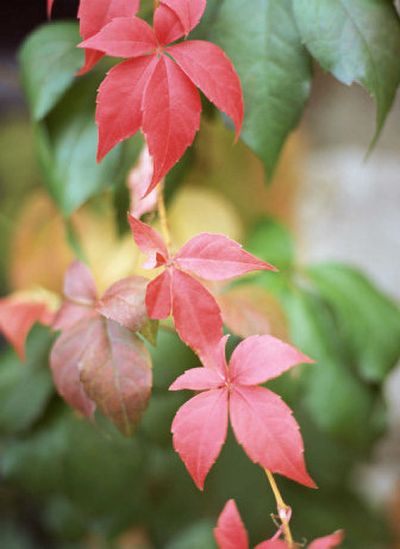Wash bugs off creeper

We have a Virginia creeper that is full of little white bugs, which fly out when they are disturbed, every year. They look like the same small bugs that tend to be in the grass.
This year our Virginia creeper has lost most of its leaves, after drying up, but the berries and vine still look healthy. Are these little bugs causing it, or could it have been the heat?
We live in the woods and don’t use bug repellents.
Ellen E. Reese
I am guessing the little white bugs are white flies. My neighbor’s Virginia creeper has the same problem.
The white flies suck on cell moisture, which causes the surface of the leaves to stipple and look like they are drying up.
An additional culprit might be spider mite. Look for very fine webs on the underside of the leaf or take a hand lens and look for very small insects with two brown spots on them.
They also can stipple the leaves.
In both cases, a good stream of cold water blasted on the underside of the leaves can disrupt both bugs.
There are several predatory bugs you can release to go after the damaging bugs, but hot and dusty conditions like we’ve had recently slow the good guys down.
Clean up under the plants in the fall to remove places the bugs can overwinter, and spray the vine with dormant oil in March to suffocate overwintering adults and eggs.
Of course, it never hurts to water everything deeply after our hot weather.
Snake a soaker hose along the base of the vine and let it run overnight if you have enough well water. If you don’t, do it in stints the well can handle.
Thinning will revitalize spirea
I have a bridal wreath spirea hedge that borders my property. My garden book says, “Spirea looks its open, airy, floriferous best if canes over 2 years old are removed on a yearly basis during dormancy, as it blooms on 1-year-old wood.”
When is the proper time to prune? How much should I take out each year? What else do I need to know to make it look its best?
LeAnn Adams
Spirea, like so many other flowering shrubs, can benefit from a periodic thinning to stimulate new growth and thus improve flowering.
In early March, take to the ground a third of the oldest wood in the plant. The oldest wood will be the thickest stems or have the oldest-looking bark.
Cut each stem back to the lowest point possible. New shoots will develop from the cut wood and be the new blooming branches.
Do this for a cycle of three years, and you will have rejuvenated your entire plant.
Spirea benefits from a little trimming to keep it looking neat after it has finished blooming, but don’t shear it with hedge trimmers. This destroys the lines of the shrub.
While they are a tough plant, this time of year make sure they get a deep soaking to replenish soil moisture.